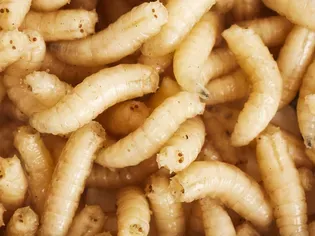Maggots For Aquarium Fish
Updated on 04/26/24

Maggots for Aquarium Fish: The Ultimate Guide to a Nutrient-Rich Treat
In the realm of aquarium keeping, live food holds a special allure. Maggots, the larvae of flies, have emerged as a highly nutritious and versatile option for feeding aquarium fish. Their exceptional nutritional profile, ease of culturing, and compatibility with various fish species make them a favorite among hobbyists and professionals alike.
In this comprehensive guide, we delve into the fascinating world of maggots, exploring their nutritional benefits, culturing techniques, and best practices for feeding them to aquarium fish.
Nutritional Powerhouse: The Benefits of Maggots
Maggots are nutritional powerhouses, packed with an array of essential nutrients that are vital for the health and well-being of aquarium fish. These nutrients include:
- Protein: Rich in protein, maggots contribute to muscle growth, tissue repair, and overall body function.
- Fats: Maggots provide healthy fats, including omega-3 and omega-6 fatty acids, which support brain development, cardiovascular health, and immune function.
- Vitamins: Maggots are a good source of vitamins, including B vitamins, which play a crucial role in metabolism, energy production, and nerve function.
- Minerals: Maggots contain essential minerals such as calcium, phosphorus, and iron, which promote bone growth, red blood cell production, and oxygen transport.
Culturing Maggots: A Simple and Rewarding Process
Culturing maggots is a simple and rewarding process that can provide a steady supply of live food for your aquarium fish. Here's how to get started:
- Acquire Fly Eggs: Obtain fly eggs from reputable suppliers or harvest them from wild flies.
- Prepare a Substrate: Fill a container with a substrate such as shredded paper, cardboard, or sawdust. This will provide a suitable environment for the maggots to burrow and develop.
- Introduce Fly Eggs: Scatter the fly eggs over the substrate. Keep the container at a warm temperature (70-80°F) and provide plenty of ventilation.
- Hatching and Growth: Within a few days, the fly eggs will hatch, releasing maggots into the substrate. Feed the maggots with a mixture of decaying organic matter, such as vegetable scraps or fruit peels.
- Harvesting: When the maggots reach the desired size, typically within a week or two, they can be harvested by sifting through the substrate.
Feeding Maggots to Aquarium Fish: Best Practices
Maggots can be fed to a wide variety of aquarium fish, including:
- Tropical Fish: Bettas, guppies, tetras, and many other tropical fish species eagerly consume maggots.
- Bottom Feeders: Corydoras catfish, plecos, and other bottom feeders relish maggots as a tasty treat.
- Invertebrates: Maggots are a suitable food source for aquarium shrimp, snails, and other invertebrates.
To ensure the safety and well-being of your aquarium fish, follow these best practices when feeding maggots:
- Rinse Maggots: Before feeding maggots to fish, rinse them thoroughly with clean water to remove any debris or contaminants.
- Moderate Feeding: Feed maggots in moderation to avoid overfeeding and water quality issues.
- Supplemental Diet: Maggots should complement a balanced diet that includes other nutritious foods such as commercial fish food, frozen foods, and live plants.
- Monitor Fish: Observe your fish closely after feeding maggots to ensure they are not exhibiting any adverse reactions.
Examples of Successful Aquarium Fish Fed with Maggots
Countless hobbyists and professionals have successfully incorporated maggots into their aquarium fish diets. Here are a few examples:
- Betta Breeders: Maggots are a popular food choice for betta breeders, as they provide the essential nutrients needed for optimal fry growth and development.
- Discus Enthusiasts: Discus fish, known for their delicate digestive systems, have been shown to thrive on a diet that includes maggots.
- Aquascapers: Aquascapers use maggots to feed bottom feeders and other invertebrates, creating a thriving ecosystem in their planted aquariums.
Conclusion
Maggots are a nutrient-rich, versatile, and highly beneficial live food source for aquarium fish. Whether you're a seasoned hobbyist or a beginner, incorporating maggots into your feeding routine can provide your fish with essential nutrients and support their overall health and well-being. By following the culturing and feeding best practices outlined in this guide, you can unlock the nutritional potential of maggots and enjoy the benefits of a thriving aquarium ecosystem.
Explore More Pets

Freshwater Aquarium Filters
How to Deal With Cloudy Aquarium Water

Saltwater Aquarium Filters
How Do You Remove Chloramines From Tap Water?

Freshwater Aquariums & Habitat
Can I Keep My Koi Fish Inside?

Saltwater Aquariums & Habitat
14 Best Floating Plants for Your Aquarium

Freshwater Fish Health
How to Treat Ich on Freshwater Fish

Saltwater Fish Health
Fin Rot in Aquarium Fish

Freshwater Aquarium Filters
How to Do Aquarium Water Changes

Saltwater Fish Health
How Do Fish Get Parasites?